Hi there fellow compact camera lovers. My name is Patrick Kuhl and I’d like to share my thoughts on the Olympus XA4.
Not Quite Love At First Sight
I’ve gone through some ups, downs, and then ups again with this camera. I was initially glad I bought one, as it added to my XA series collection, next to my XA and XA2 (no plans for getting the XA1 or XA3). But my XA4 sat on the shelf for a couple months while I continued to shoot my XA and other compact cameras. Then, I decided to clean house of cameras I rarely used so that I will have some money to spend on a camera while on vacation in Europe this May. I’ll be honest with you, I almost sold my XA4! Twice! But fortunately, I set the price too high and no one bid on it. So, I kept it. And now that I’ve run some film through it, I’m really glad it didn’t sell.
This camera is really proving to be an amazing companion to my Leica M4-P for street photography. I’ll explain the reasons why I like this camera and what it is capable of. But first, let me share a little bit about myself.
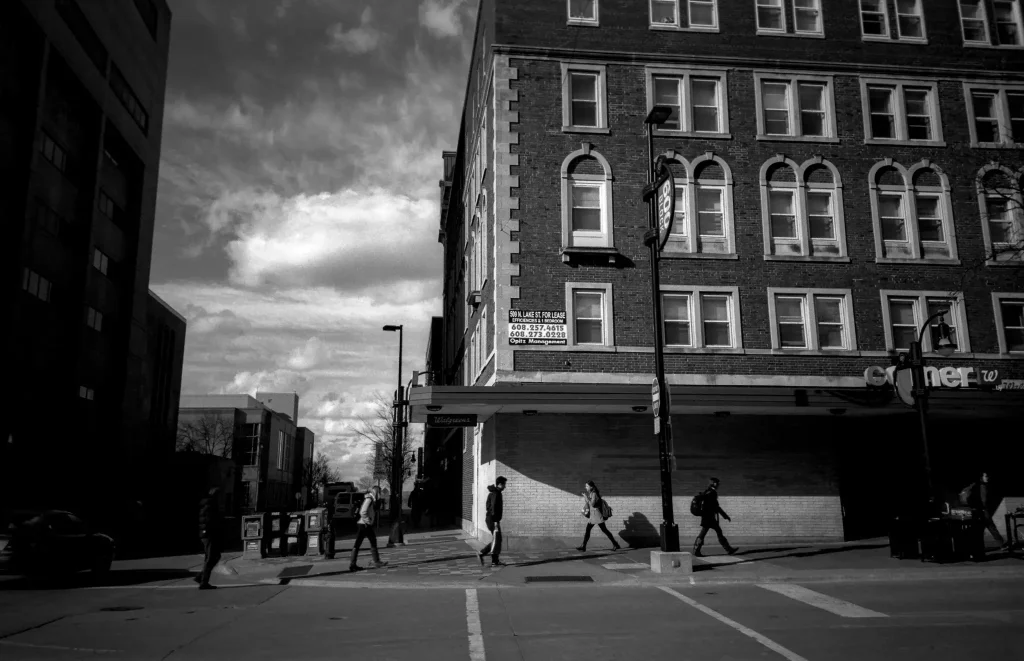
Who Am I and What Do I Do?
I’m an IT guy in Madison, WI, and have been here for about eight years now. I’ve always loved gadgets, but only got into photography about 4 years ago when my wife, after watching me drool over a Canon Rebel T3, decided to buy one for me. Like most people with a brand new DSLR and no clear direction, I took photos of everyone and everything.
I dabbled in every genre of photography that I could. That led to a serious case of Gear Acquisition Syndrome and a lot of money spent for about two years before I finally settled on street and landscape/travel photography. Towards the end of that first two years, I started shifting to smaller cameras, as the idea of continuing to lug around a Canon 5D and/or a Bronica ETRS was practically causing my spine to scream in agony. I eventually settled on a Fuji X-E2 and a Ricoh GR for digital. I still missed larger formats like full-frame though.
I then realized I didn’t need digital for that, as 35mm film cameras have already been around for a long time. I could also get into 35mm film photography for much cheaper than digital. I started out with SLRs, but soon found my way to rangefinders and compacts. I haven’t looked back.
I really enjoy shooting with smaller cameras, as they allow me to shoot faster and longer (great for travel and landscape shooting), and also allow me to blend in better while shooting on the street. I can usually be found after work getting shots on my walk up State Street in Madison. Otherwise, I really like to go backpacking with my wife, usually in the mountains somewhere out west, and soon in Europe this summer. It is finally going to be an easy decision about which cameras and lenses to take with me, as my collection has become significantly smaller. I’ll definitely be taking the XA4 with me too, and I’ll explain why.
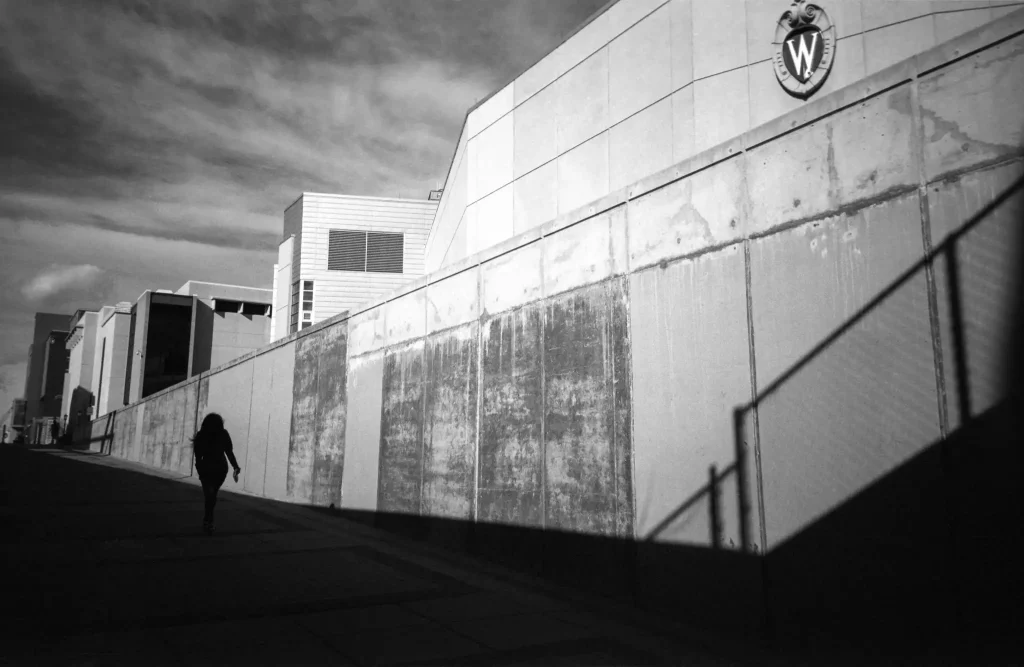
Why This Type of Camera?
I am starting to really like 28mm lenses. After finding myself using that field of view most often on the 18-55mm lens on my Fuji, I bought a Ricoh GR and eventually sold the 18-55 lens, despite it being a quality one. I really like how compact the GR is. I wanted to get a 28mm compact film camera too (and to be honest, I’ll probably get a 28mm lens for either LTM or M mount as well), but I didn’t want to shell out $400-$600 on a Ricoh GR1 series, Minolta TC-1, Nikon 28TI, etc. and then have it break on me with no way of cheaply getting it repaired. I can do some basic repairs on my Leicas and other more accessible film cameras. I don’t think I’d be able to repair an advanced compact though. So, enter the XA4.
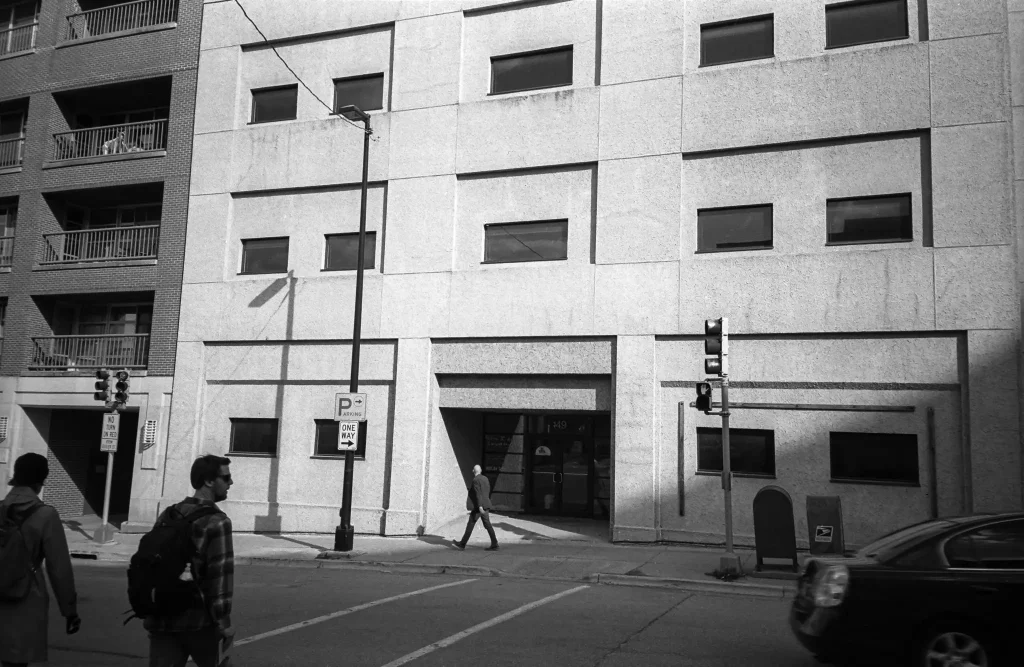
Tech Specs and Comparisons
I spent about $150 on my Olympus XA4 and I think I could do some basic repairs on it if it breaks. But, I don’t think that’s going to happen any time soon. Just like the rest of the XA series, this camera is solidly built and expertly engineered. It too sports a handy sliding cover (“Dust Barrier”) to protect the lens, and when closed it turns off the shutter to prevent accidental shutter presses.
The lens isn’t that speedy. It’s max aperture is f/3.5. But it handles colors and highlights as well as the XA (which is probably my favorite compact camera of all time). And as I said, I’ve been using this for street photography.
The “macro” aspect is practically meaningless to me. It’s nice that it can focus down to a foot, and the strap that comes with it is useful for measuring either 1 foot away or 1.7 feet away (mine uses feet for the distance scale), depending on if it is at the normal length or extended all the way out. But, it won’t see much use from me. I apologize if you came to this article expecting me to cover this in more detail. Macro photography is just not an area I’m interested in anymore. I do like that the strap can easily be wound around my hand without getting in the way too much. So that’s nice.
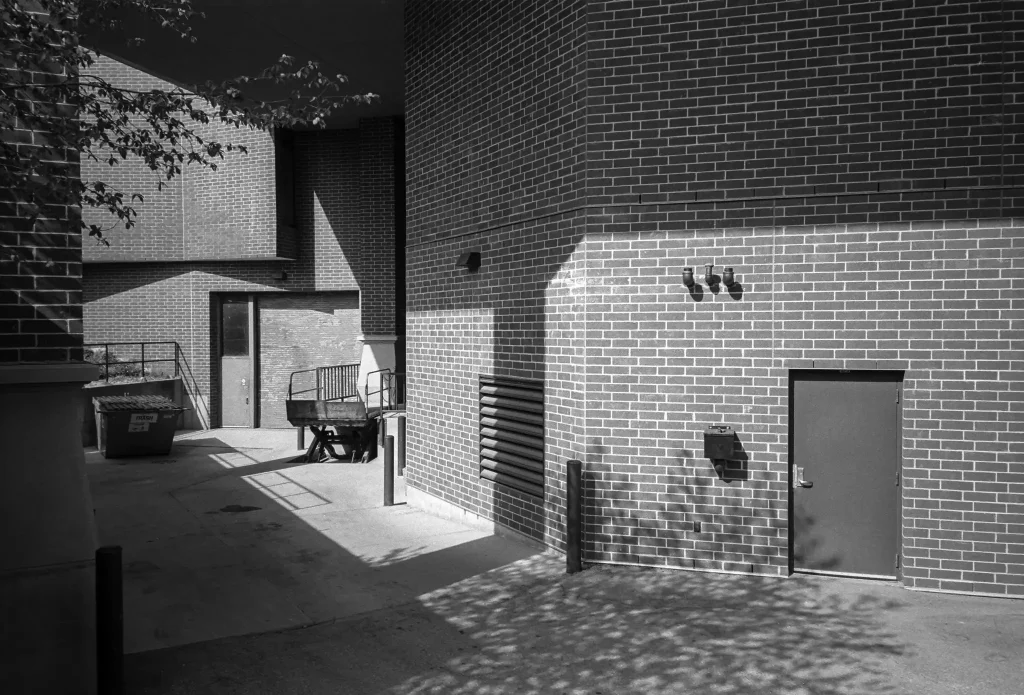
As I said before, there were ups and downs at first. One of the things that annoyed me with the Olympus XA4 is the same thing that annoyed me with the XA2. That is, closing the sliding cover resets the focus to a default distance. On the XA4, that distance is 10 feet (or about 3 meters). That is not a distance I use all that much. When I do, I wish I was able to control the aperture so I’d know what range is in focus. I typically keep it on infinity though, so that means the cover stays open a lot when I’m carrying it. I’ve considered taking off the cover to see if I can modify it so that it doesn’t reset the piece that slides sideways in the area under the flash switch. Maybe someday I’ll look into it. For now though, it’s not hard to just quickly switch it depending on if my subject is either relatively close to me, or across the street. Ten feet is not that far away from the camera, so most of the time, it gets changed right away.
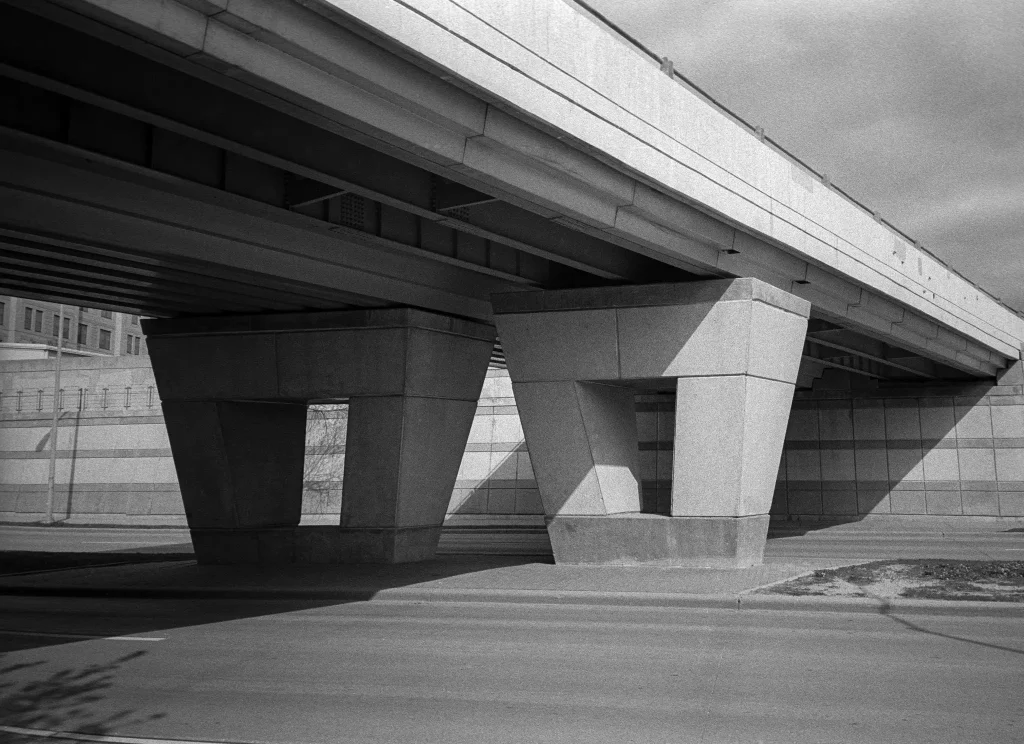
As for the rest of the Olympus XA4 features, they mostly mirror those found on the XA, with some upgrades. The shutter release is the same pressure-sensitive “feather touch” electromagnetic one, which is really nice for street photography because it is so quiet. The same +1.5 exposure compensation, battery check, and self timer lever is here as well.
The XA4 has a more prominent parallax correcting set of viewfinder lines than the one on the XA. It can read DX coded film too, which the XA cannot. It can also be set to ISO 1600 for non-DX coded films, whereas the XA only goes up to ISO 800. Make sure to remember that the ISO selector is useless if you have DX film loaded. It will ignore whatever you set it to and only use the DX coded ISO. So, you’ll have to modify the code on the film cannister if you want to push or pull the film.
As for the flash capabilities, I assume it’s the same as with the XA. I have an A11 flash for each camera, but I never use them. Since that flash is interchangeable like the other flash models, I can only assume they perform similarly across all the models. However, Olympus also apparently made a flash adapter that I assume acts as a diffuser. It attaches to the top of the flash and is supposed to be used for close-up shots. I’ve never seen one in person, and maybe only ever saw one on eBay once, at a ridiculous price.
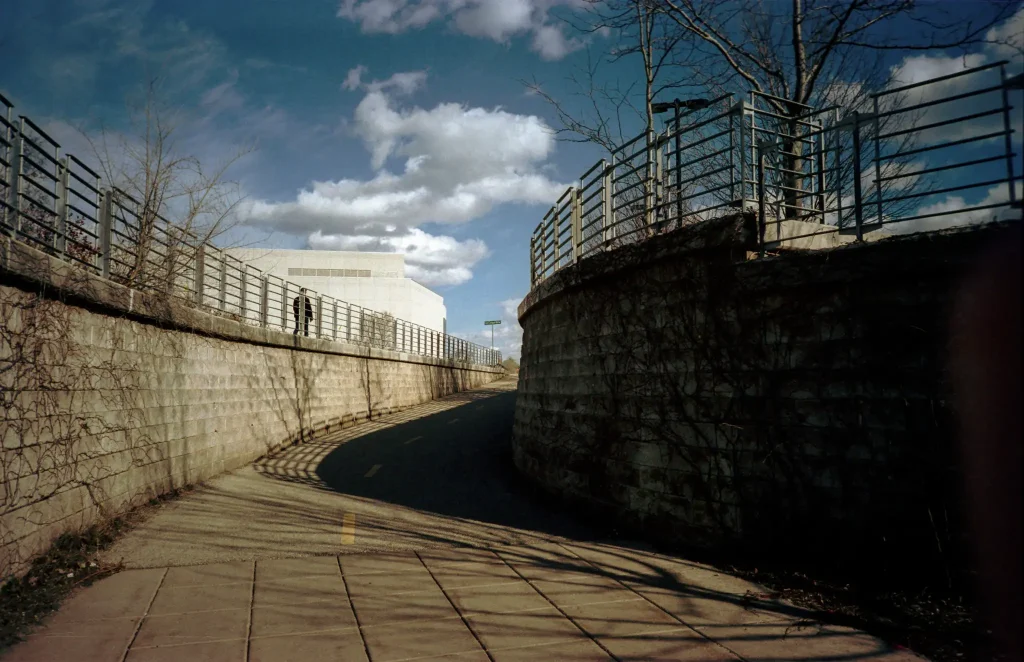
Metering
When it comes to the metering, I have yet to be disappointed. It has worked great with both the color and black and white films I used (expired Kodak Gold 200 and Kentmere 400). The highlights are handled particularly well. I really like how the skies come out most of the time too. As for the focusing, my shots rarely ended up out of focus. What’s important to remember here is that all of the B&W shots are done at ISO 400 (except the Kodak Gold converted ones). Because I shoot mostly when there is a lot of direct sunlight, and the max shutter speed of the XA4 is 1/750th, the aperture is going to end up pretty small. I can only guess what actual aperture it chooses of course, but the depth of field observed in the results makes me believe it’s typically a small one.
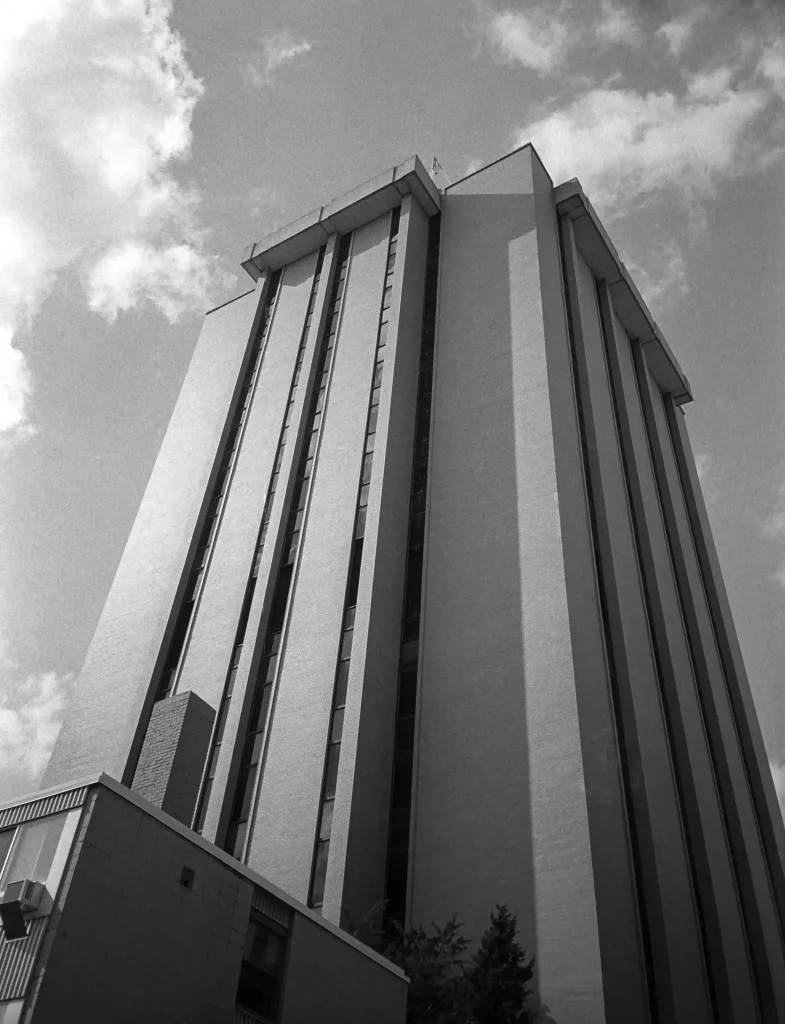
Conclusion
Anyway, I highly recommend this camera to any street photographer, especially those who already love the XA series. Here are some more shots I’ve gotten this year with my Olympus XA4. I scanned them all via a Nikon Super Coolscan 4000, did basic exposure processing in Lightroom, and did spot removal in Photoshop.
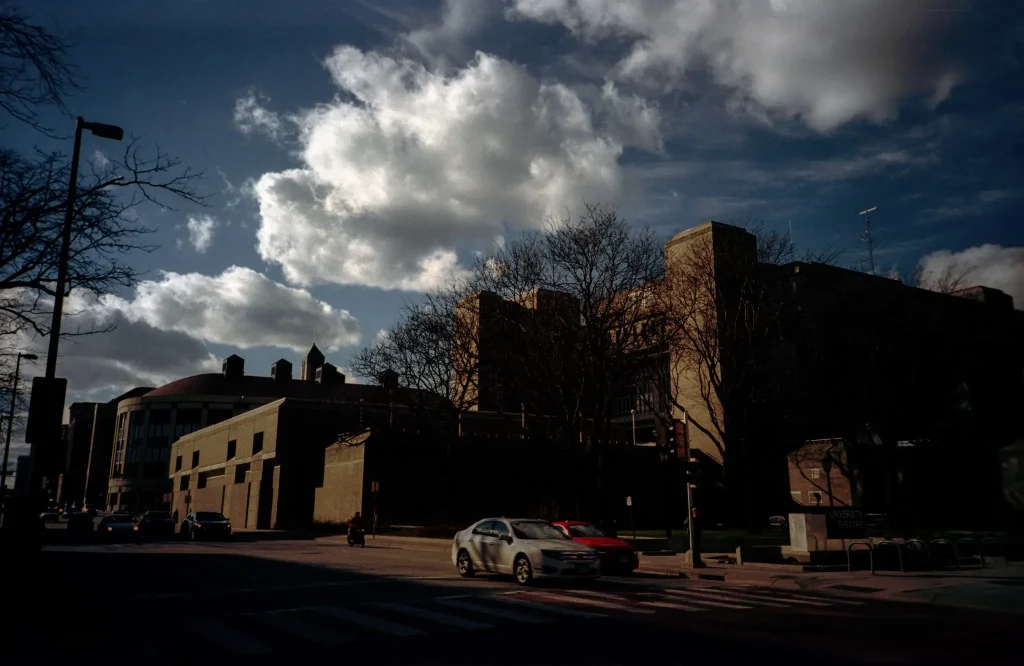
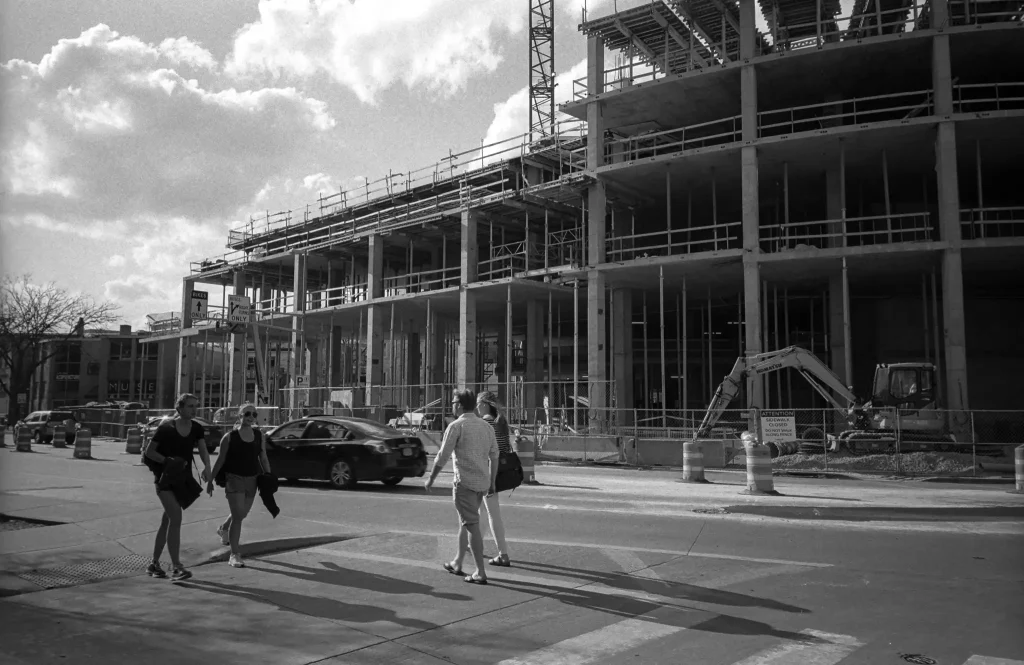
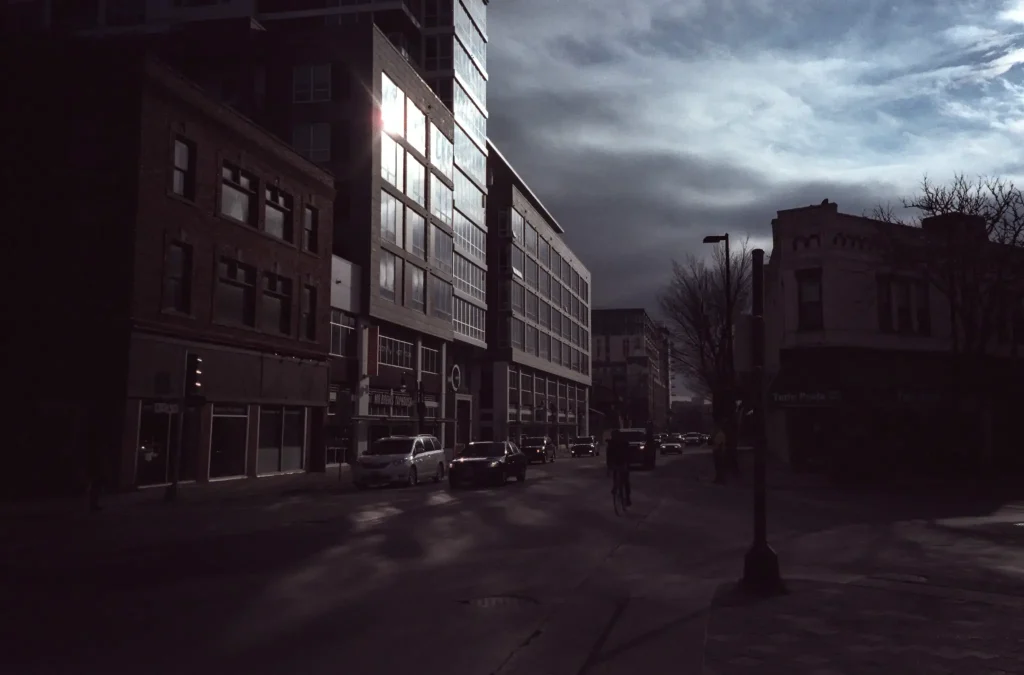
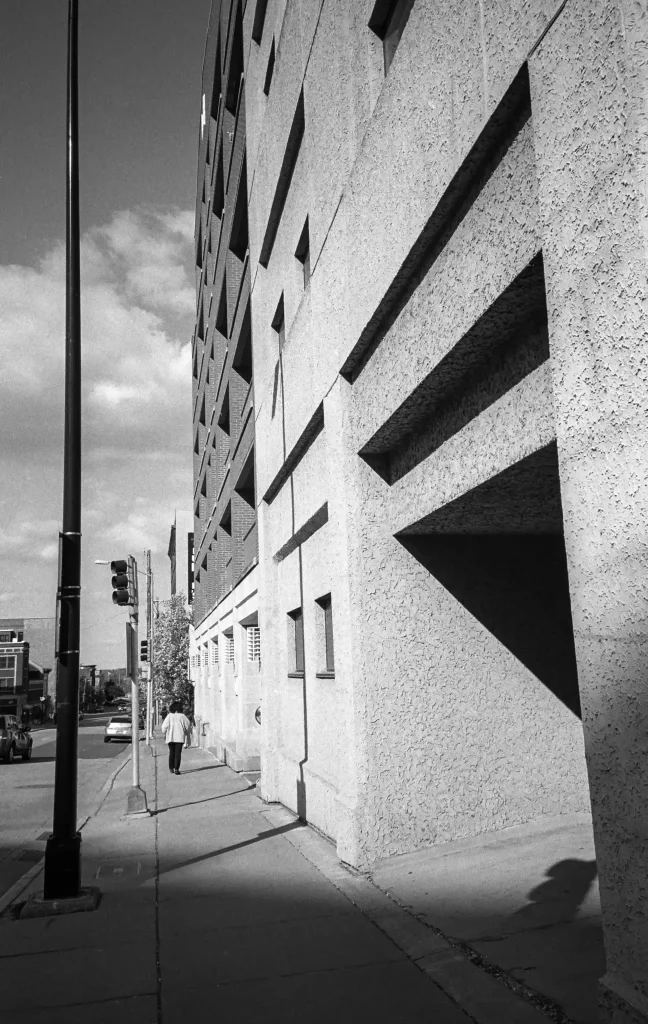
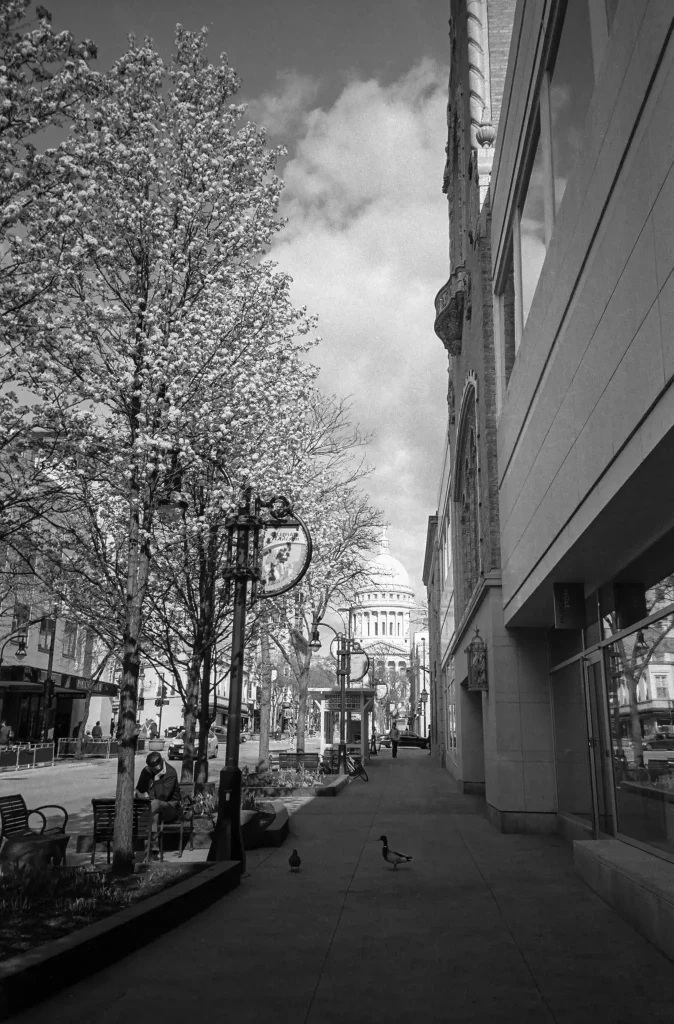
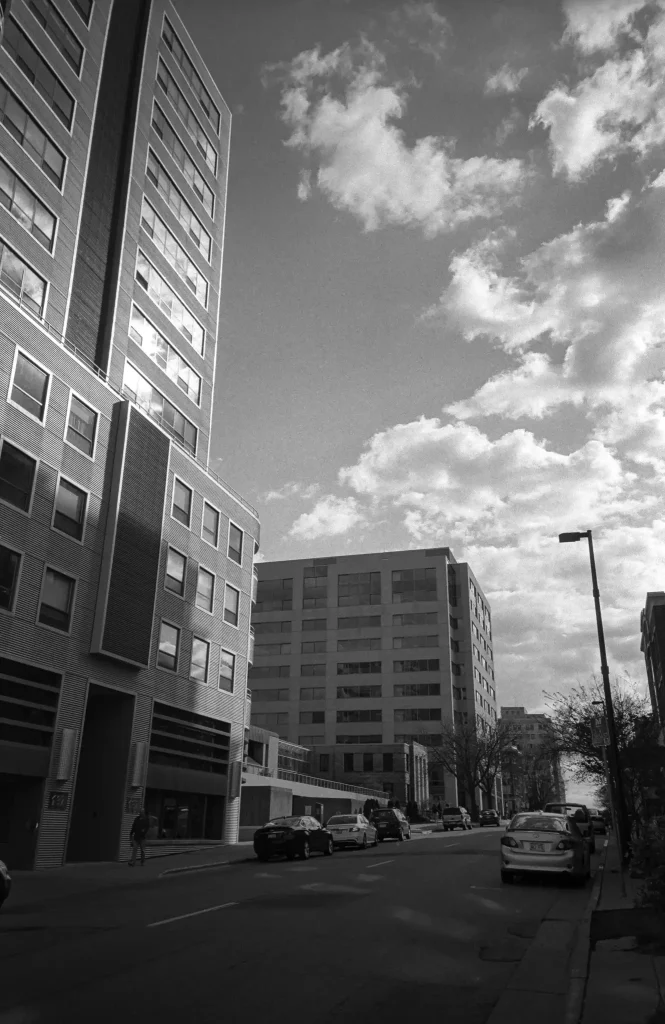
You can find more of my photos at the following links:
www.pdkphoto.com
www.flickr.com/patkuhl
www.instagram.com/pdkuhl
www.twitter.com/patrickkuhl
www.madisoncamerastyle.com
Share this post:
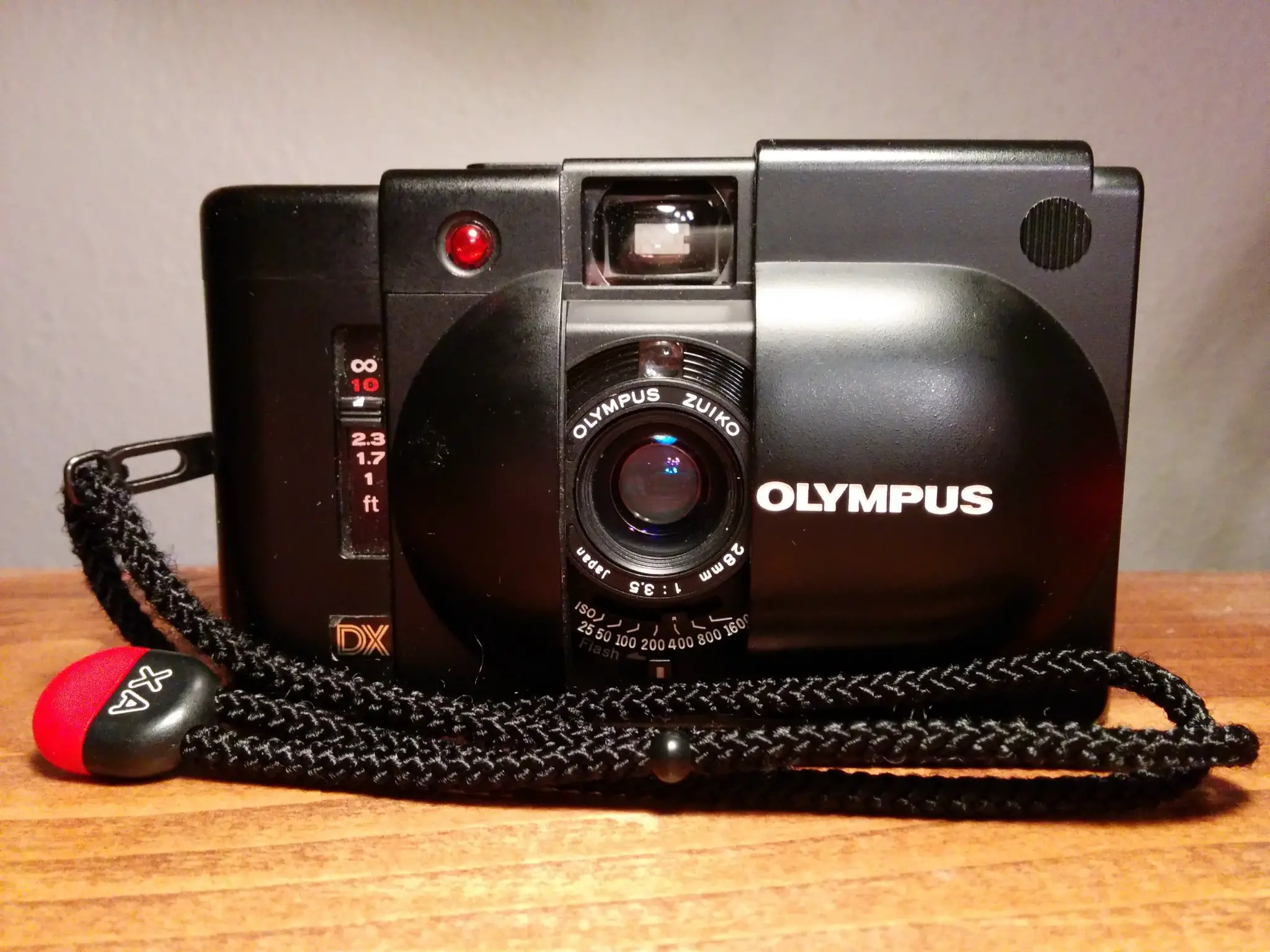








Comments
Hamish Gill on Olympus XA4 Review – by Patrick Kuhl
Comment posted: 06/05/2016
I love that second photo!
Comment posted: 06/05/2016
Dan James on Olympus XA4 Review – by Patrick Kuhl
Comment posted: 06/05/2016
For now I have a Pentax Espio 120SW which is 28mm at the wide end, and since I never use the zoom on it, it is in effect a fixed 28mm to me. That's capable of some really impressive pictures, and I don't think an XA4 would for me offer anything better. Especially as the Espio was one of a lot of a dozen Pentax compacts I got for about £12 all in!
I really like seeing how you shoot Kodak colour film and convert to b/w. I've been having a debate with myself about b/w film for some time, between using "proper" b/w film, which for me is really expensive to have processed, and using the cheap to process yet expensive to buy CN films like Fuji Neopan 400CN, Ilford XP2 Super and Kodak BW400CN.
I have considered just shooting cheap colour film with the mindset of shooting b/w, then converting afterwards, like you have. I can buy AgfaPhoto Vista Plus 200 (rebranded Fuji C200, and excellent) for £1 a roll, and processing and scanning is about £3 a roll at my local Asda supermarket. Way cheaper than either b/w option, and therefore very appealing!
Your first picture, "State Street" looks great to me, and I wouldn't have known it was "proper" b/w film, so you've given me a further nudge in this direction, thank you.
Just one question on this front, do you decide you are shooting b/w before you begin, even when using colour film you'll convert afterwards, so you shoot with a b/w mindset? (This is what I would do.) Or do you shoot colour, then just pick and convert any shots from the roll you think might work better as b/w afterwards?
Comment posted: 06/05/2016
Comment posted: 06/05/2016
ehpem on Olympus XA4 Review – by Patrick Kuhl
Comment posted: 06/05/2016
I found this a very interesting review as I have been keeping an eye open for an XA4 at an affordable price - I shoot a lot with an XA2 and sometimes an XA. I too often convert expired Kodak film to black and white as I find the colour rendition doesn't hold up well, but that as it ages it develops grain that looks well in mono.
If you just cover up the DX coding with a bit of tape or something, does that work to release the manual ISO controls, or is there something else embedded in or on the canister that over-rides the manual setting?
Eddy on Olympus XA4 Review – by Patrick Kuhl
Comment posted: 06/05/2016
Paul on Olympus XA4 Review – by Patrick Kuhl
Comment posted: 06/05/2016
Enjoyable review, too. Of the XA series, I have the XA2, which is great, but the additional width of the XA4 is appealing.
Tom Perry on Olympus XA4 Review – by Patrick Kuhl
Comment posted: 16/06/2016
Comment posted: 16/06/2016
Dan on Olympus XA4 Review – by Patrick Kuhl
Comment posted: 04/10/2017
Thanks so much for this post! Got a lot of good info out of it, I just picked up a pretty well maintained XA4 at a garage sale for $5! It's all working fine except I can't seem to get the A11 flash to go off when I shoot? I read that you haven't used yours but if you have any help for a beginner it would be much appreciated friend!
Thanks again !
Dan
Comment posted: 04/10/2017
Olympus XA review - Kosmo Foto on Olympus XA4 Review – by Patrick Kuhl
Comment posted: 15/04/2019
Dan Nyquist on Olympus XA4 Review – by Patrick Kuhl
Comment posted: 30/06/2019
Neal A Wellons on Olympus XA4 Review – by Patrick Kuhl
Comment posted: 11/04/2020
I've been shooting 28mm lens 35mm since the 60s and actually bought an XA-4 when they came out. 28mm is my favorite focal length (I even bought the 28mm converters for my 2 digital cameras, a Fuji X100s Infrared and Fuji X-100F.) I loved my old XA-4 it but years later I lost it when it slid out of my car. Now, many years later, I have one again and it is just as good as I remember. Most of my subjects are landscape or at least more than 10' away so my hands automatically click the focus lever up to infinity every time I open the case. I hardly even think about it.
I shoot mostly Kodak Portra and home develop. Results are always satisfying.
Great review of a great camera.